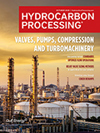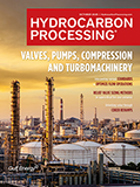Petrochemicals
Grace licenses polypropylene process technology to KIPIC, Sinochem
COLUMBIA, MD. — W. R. Grace & Co., a supplier of polyolefin catalyst technology and polypropylene (PP) process technology, has contracted to license its UNIPOL PP process technology to Kuwait Integrated Petroleum Industries Company (KIPIC) for the integrated petrochemical complex at its Al-Zour refinery and Sinochem Quanzhou Petrochemical Co., Ltd. for a 1-MMtpy ethylene cracker and refinery expansion project at its facility in Quanzhou, Fujian province, China.
Suez, LyondellBasell in plastics recycling JV
PARIS (Reuters) — French waste and water group Suez and LyondellBasell Industries NV plan to set up a plastic recycling joint venture in the Netherlands, Suez said in a statement.
Reactor arrives at LyondellBasell’s first commercial hyperzone polyethylene plant
LyondellBasell, one of the world's largest plastics, chemicals and refining companies, announced the arrival of its Hyperzone polyethylene (PE) plant’s multi-zone circulating reactor, a significant milestone in the project’s construction phase.
SNC-Lavalin awarded engineering contract by Ecopetrol in Colombia
BOGOTA — SNC-Lavalin announced it has been awarded a contract by Ecopetrol in Colombia for conceptual, basic and detailed engineering on high and medium-complexity projects through to 2020.
Chevron Phillips Chemical celebrates startup of US Gulf Coast petchem project
THE WOODLANDS, Texas — Chevron Phillips Chemical Company LP celebrated the startup of its world-scale polyethylene (PE) units in Old Ocean, Texas that will play a pivotal role in the company’s continuing dynamic growth strategy.
Braskem signs partnership with Haldor Topsoe to develop biobased MEG
SAO PAULO — Braskem, the American producer of thermoplastic resins, and Danish-based Haldor Topsoe, a company in catalysts and surface science, have signed a technological cooperation agreement to develop a pioneering route to produce monoethylene glycol (MEG) from sugar. The agreement calls for the construction of a demonstration plant in Denmark, with operation slated to begin in 2019.
S.Korea's Hanwha Total to raise LPG use in cracker after expansion
PENANG (Reuters) — South Korea’s Hanwha Total Petrochemical will use at least four times more LPG feedstock when it completes raising its cracker capacity by 30% to 1.4 MMtpy in 2019, said a top executive.
China's CEFC, Rosneft to study South China petchem complex
BEIJING/MOSCOW (Reuters) — Private conglomerate CEFC China Energy and Russia's largest oil producer Rosneft have agreed to study the possibility of building a petrochemical complex in South China, Rosneft said on Friday.
China Energy Investment signs MOU for $83.7 B in West Virginia projects
BEIJING (Reuters) — China Energy Investment Corp, the world's largest power company by asset value, has signed a memorandum of understanding (MOU) to invest $83.7 B in shale gas, power and chemical projects in West Virginia, the US state said on Thursday.
Shell begins main construction on Pennsylvania petchem complex
HOUSTON – Shell Chemical Appalachia LLC announced the official start of the main construction phase of its major petrochemicals complex in Pennsylvania, USA. This follows the successful completion of the site preparation and detailed design and engineering work.

- INEOS to invest €250 MM in Lavera cracker modernization project in France 11/19
- BASF adds ISCC EU certification to certified biomass-balanced methanol portfolio 11/19
- Siam Cement to invest an additional $500 MM in Long Son chemical complex 11/19
- LanzaJet produces first jet fuel from ethanol at a commercial scale 11/19
- Ducor Petrochemicals, Blue Circle Olefins partner to create a fully circular supply chain for polypropylene 11/18
- World's first: Air Liquide’s innovative technology converts ammonia into hydrogen at industrial scale 11/18




